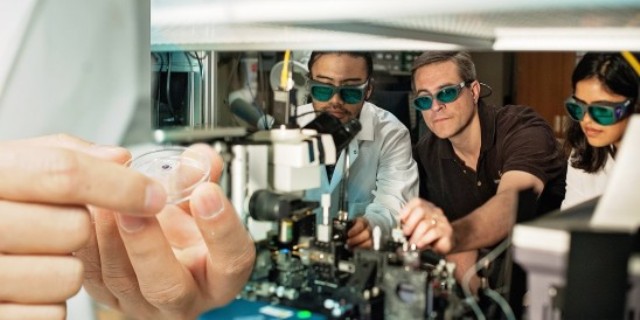Mar 24 2015

Researchers from the University of Central Florida and the University of Texas El Paso have invented a new and effective method of rapidly transmitting data with the help of light. The new device imitates a plastic honeycomb and is smaller than the sting of a bee.
The device can trigger the light beams around tighter curves in an efficient way without affecting the intensity and integrity of the beam. Data transmission via light beams improves the transmission speed thousand-fold when compared to other means such as via electric signals.
However, controlling the transmission of light beams without affecting their energy is a complex task. Computer and microchip manufacturers are constantly figuring out the suitable way to encounter the problems associated with the speed of electronics.
“Computer chips and circuit boards have metal wire connections within them that transport data signals. One of challenges when using light is figuring out a way to make tight bends so we can replace the metal wiring more effectively,” said Raymond Rumpf, professor of electrical and computer engineering at UTEP.
“Direct laser writing has the potential to become a flexible means for manufacturing next-generation computer devices,” said Stephen Kuebler, associate professor of chemistry at UCF.
Kuebler and his students have created the miniature lattices with the help of direct laser writing - a nanoscale 3D printing type. Following this, the team transmitted the light beams via the lattices to prove that the light transmission across turns can occur without any loss.
The finding proves effective as engineers are keen on packing ultra-fast data-transmission devices into a compact system owing to the increasing demands of faster and smaller hand-held devices and computers.
The light can be gradually triggered across the turns using traditional light waveguides such as optical fibers. There are chances of energy loss and escape of light beams upon turning the light quickly. The team, hence, developed the plastic devices with lattice that triggers the light to make ultra-sharp turns without energy loss.
This finding enabled the UTEP-UCF teams to mark a new record in the optical field by allowing the light beams to bend. Kuebler stated that the team is further working on developing a lattice that will facilitate an even tighter turn of the light beam.
Rumpf, who manages the UTEP’s Electromagnetic Lab, said that the groundbreaking discovery holds promise for applications in high-performance super computers prior to the use in laptops.
The work was published in the Optics Express journal and funded by the National Science Foundation (NSF).